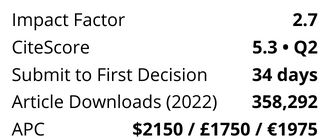The process of interception was studied in 25-year-old dense stands of Norway spruce in South Sweden. The throughfall was measured intensively during one month and extensively during four growing seasons using water captured by large roofs and with randomly distributed funnel gauges. It was found that about 45% of the precipitation was lost as interception loss from this dense forest canopy. However, many sources of potential error, particularly in measurement of precipitation and throughfall, may be involved in quantifying the interception loss. The data set was used to test the interception part of a hydrological model, SOIL. The model uses a simple threshold formulation to calculate the accumulation of intercepted water in a single storage variable. The model was able to estimate fairly well the long-term cumulative interception loss from the forest canopy However, similarly to many other models, SOIL showed a pattern of overestimation of the interception loss during events with small precipitation and underestimation during events with large precipitation. It was concluded that the storage capacity was of major importance in modelling of long-term interception loss. Tree canopy water storage capacity on a leaf area basis was estimated to 0.7 mm which was three times larger than that obtained from a precipitation/throughfall graph.
Skip Nav Destination
Article navigation
Research Article|
August 01 2001
Interception of a Dense Spruce Forest, Performance of a Simplified Canopy Water Balance Model
Ghasem Alavi;
Ghasem Alavi
1
Dept. of Soil Sciences, SLU, Uppsala, Sweden
Search for other works by this author on:
Per-Erik Jansson;
Per-Erik Jansson
2
Dept. of Civil and Environmental Engineering, KTH, Stockholm, Sweden
Search for other works by this author on:
Jan-Erik Hällgren;
Jan-Erik Hällgren
3
Dept. of Forest Genetics and Plant Physiology, SLU, Umeå, Sweden
Search for other works by this author on:
Johan Bergholm
Johan Bergholm
4
Dept. of Ecology and Environmental Research, SLU, Uppsala, Sweden
Search for other works by this author on:
Hydrology Research (2001) 32 (4-5): 265–284.
Article history
Received:
February 22 2000
Revision Received:
August 04 2000
Accepted:
March 22 2001
Citation
Ghasem Alavi, Per-Erik Jansson, Jan-Erik Hällgren, Johan Bergholm; Interception of a Dense Spruce Forest, Performance of a Simplified Canopy Water Balance Model. Hydrology Research 1 August 2001; 32 (4-5): 265–284. doi: https://doi.org/10.2166/nh.2001.0016
Download citation file:







